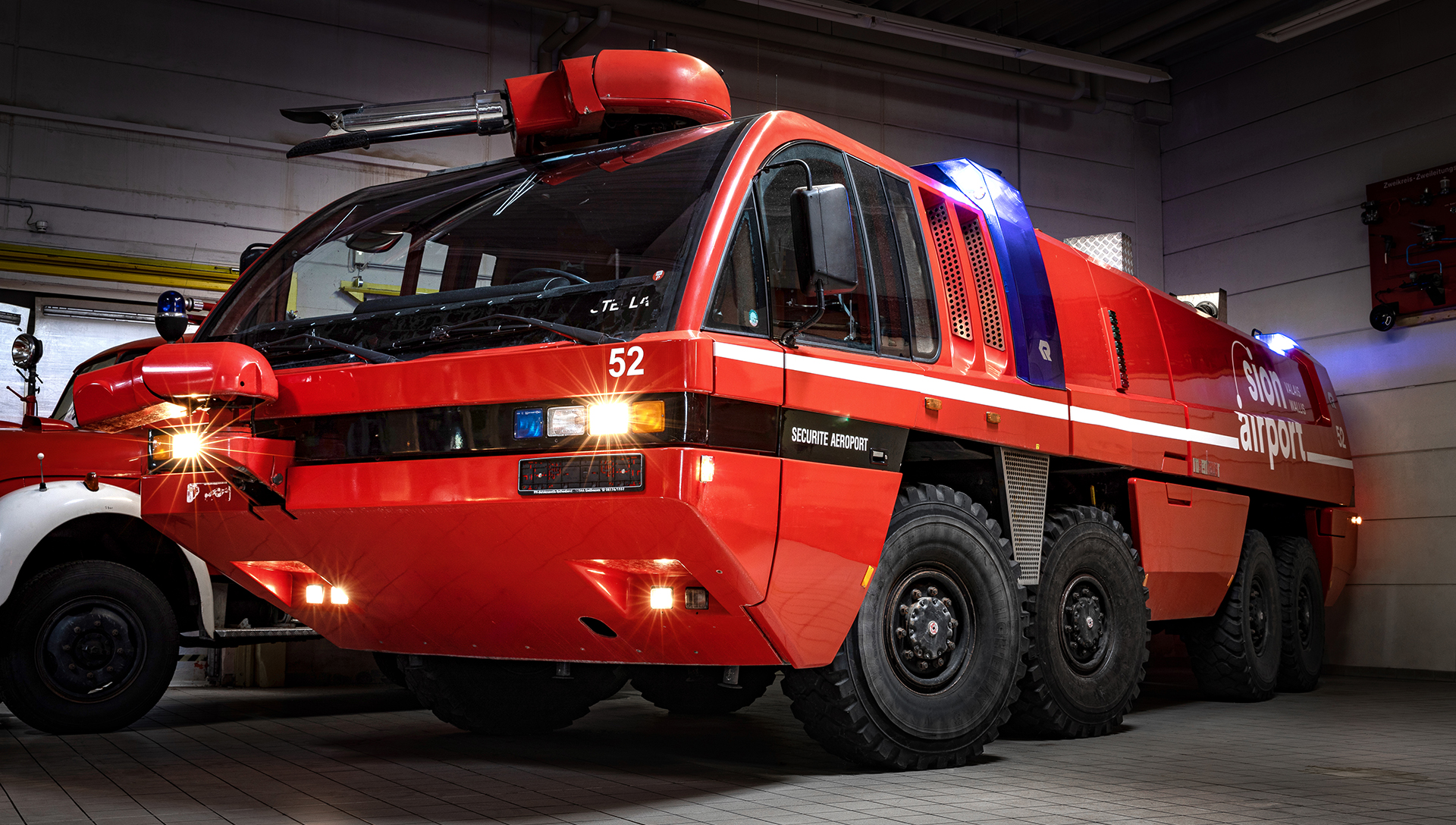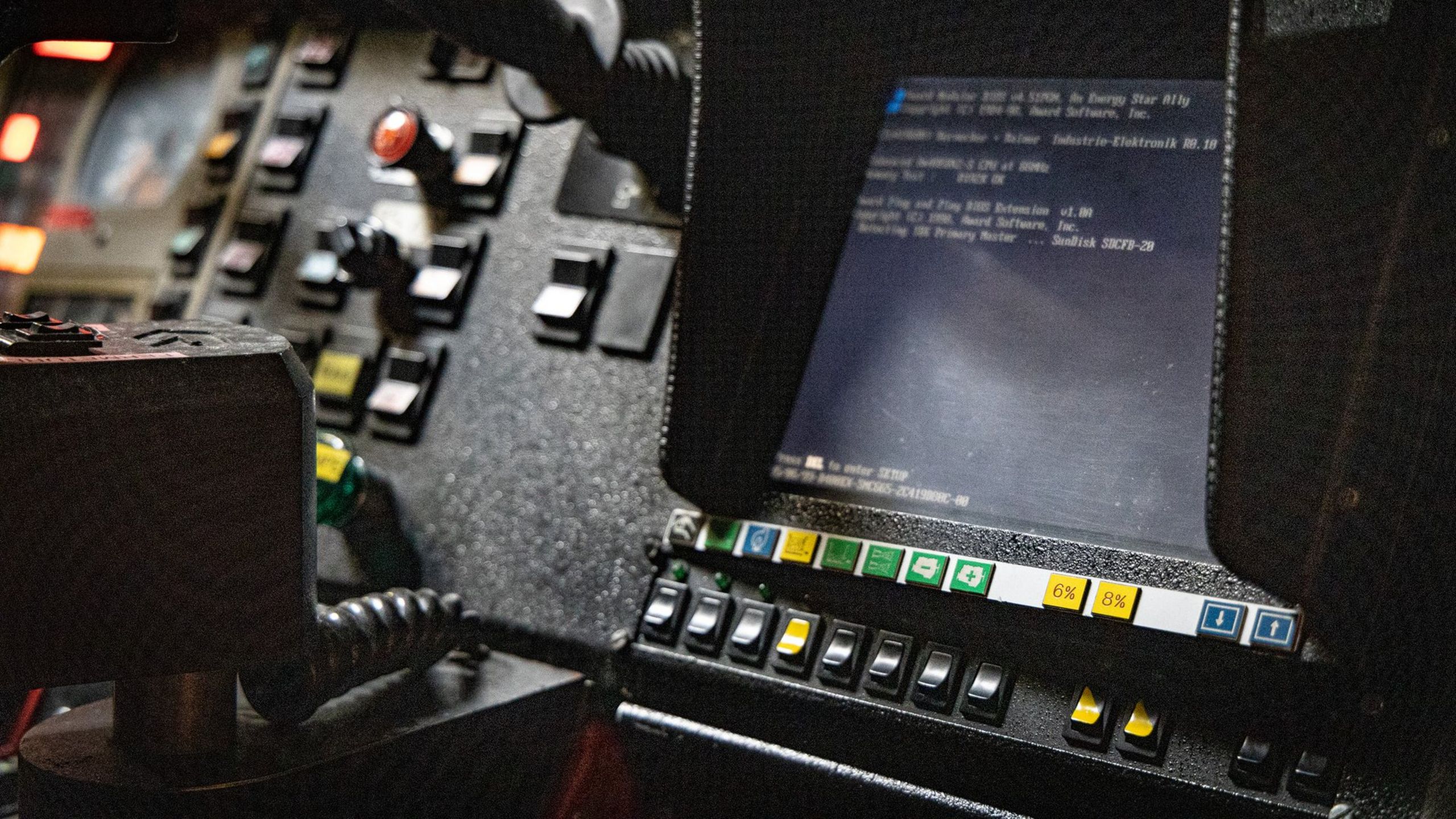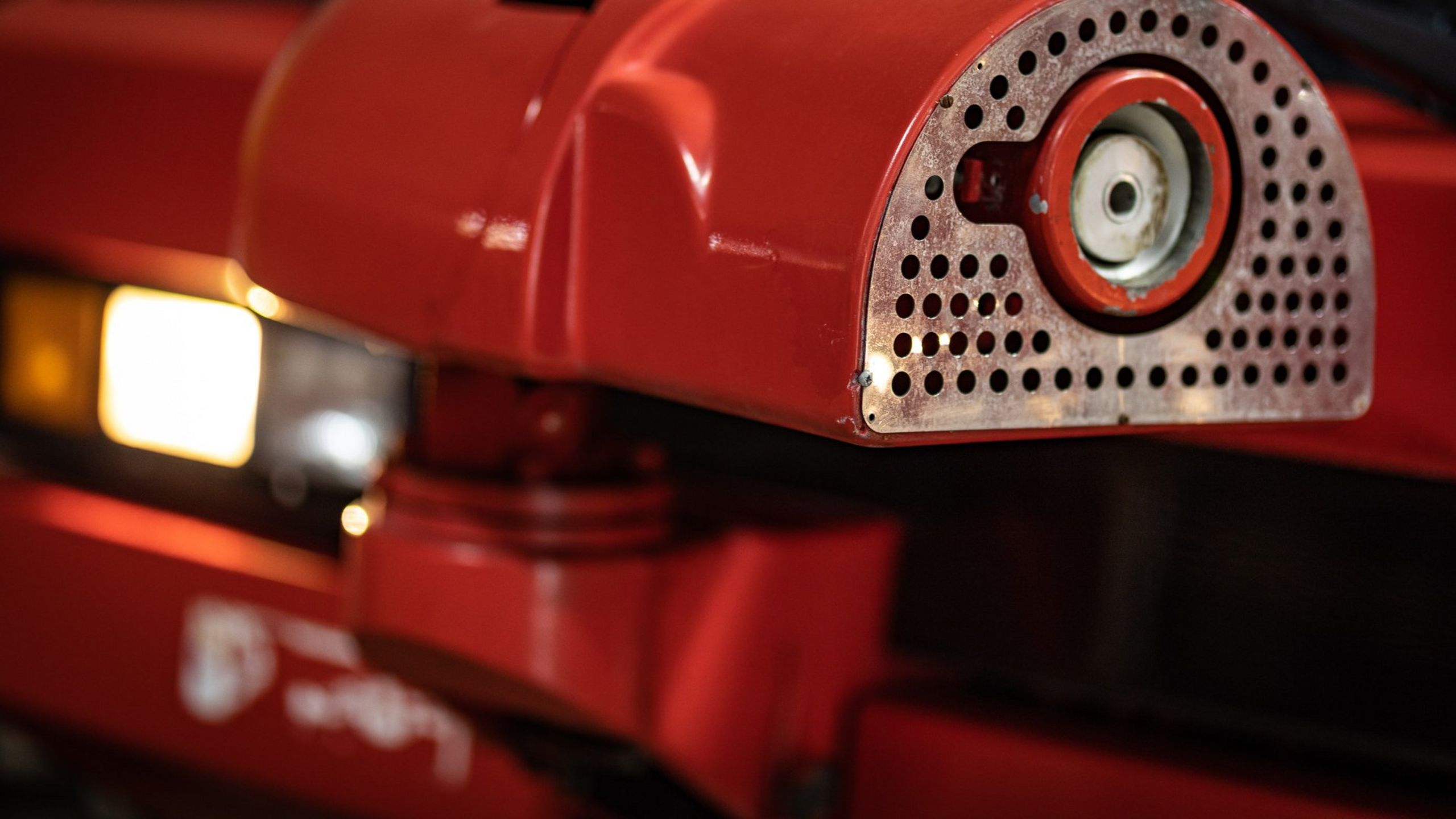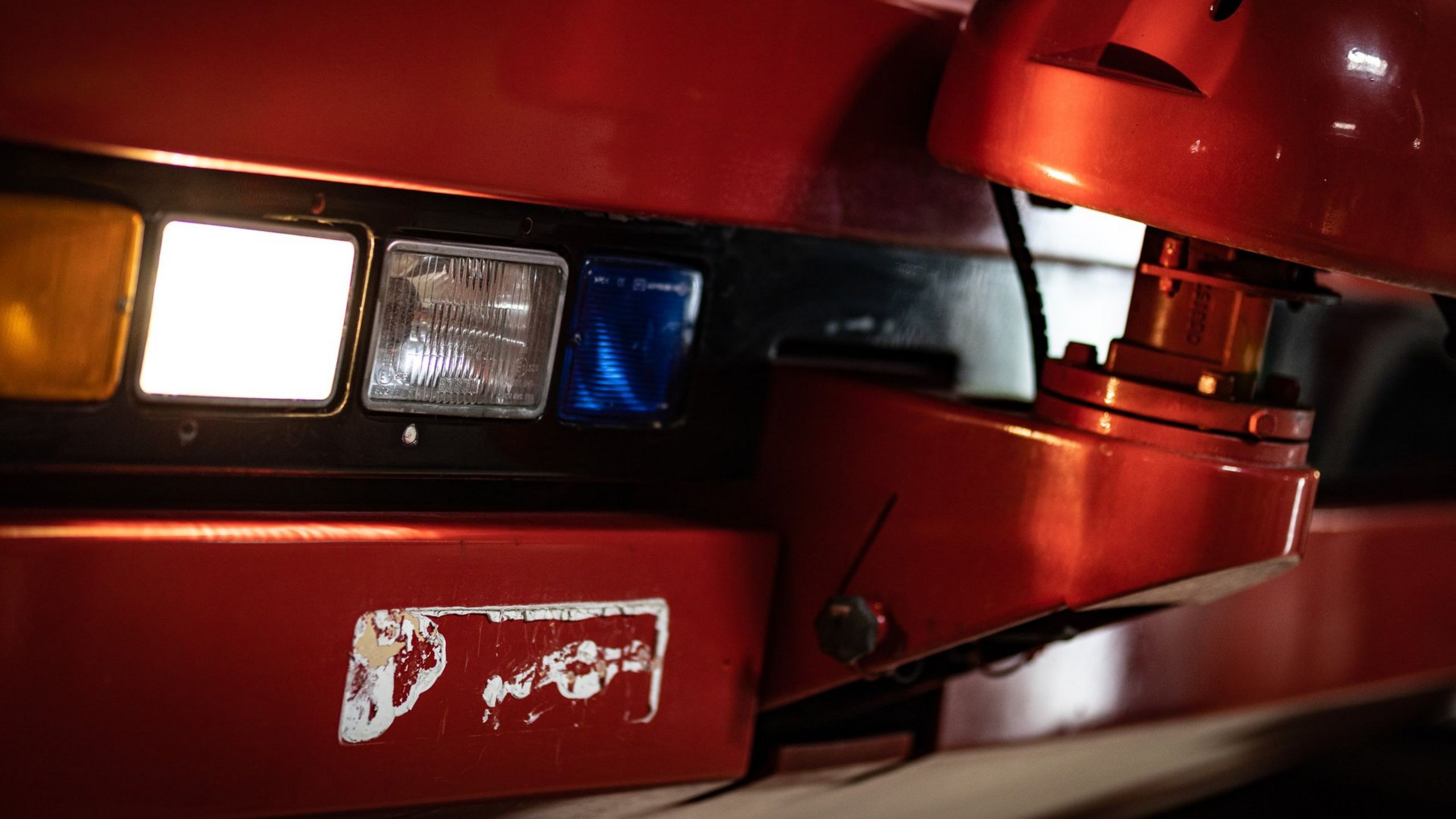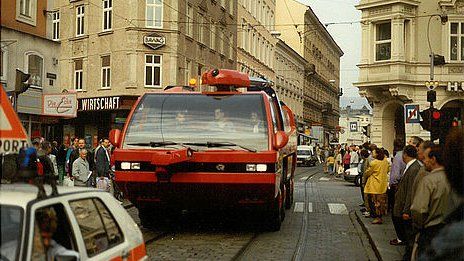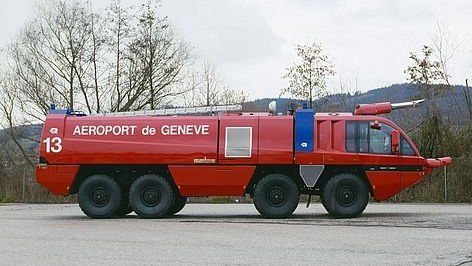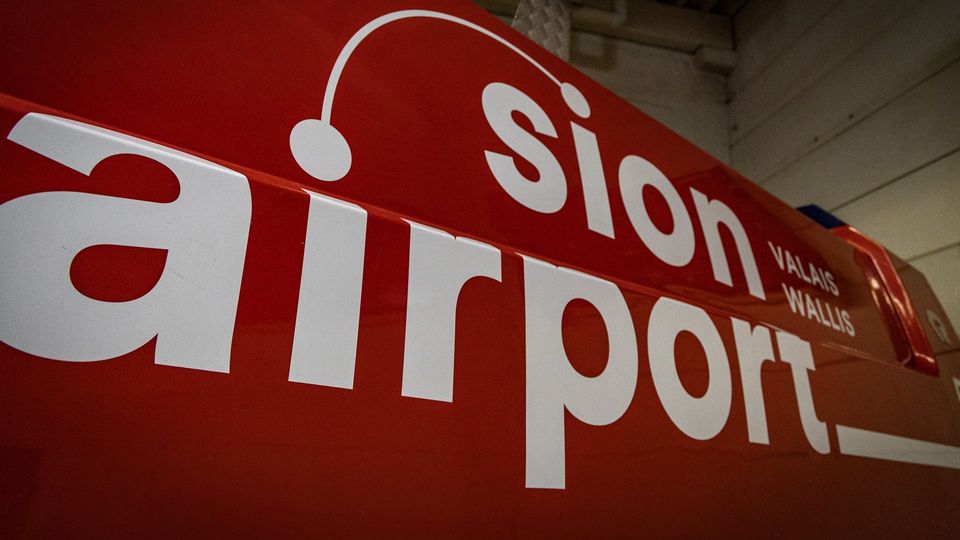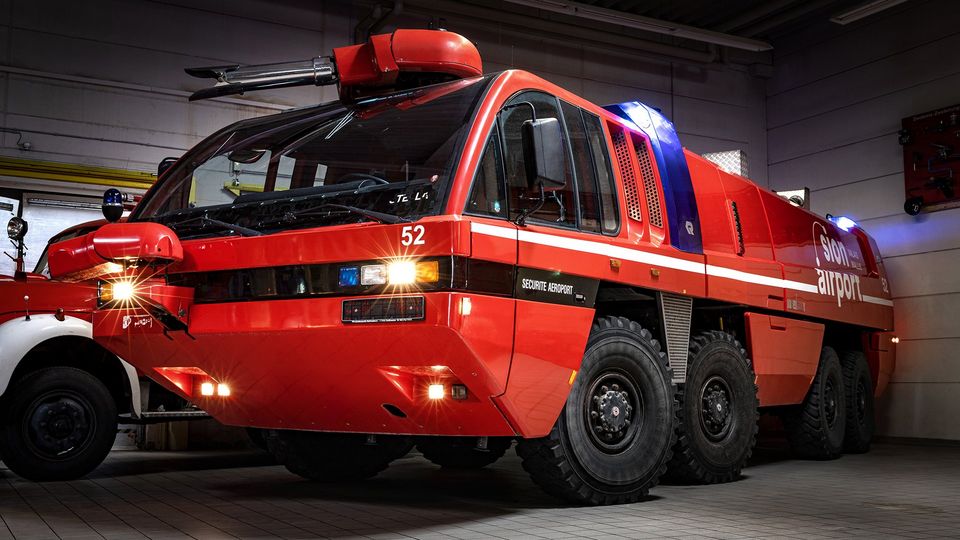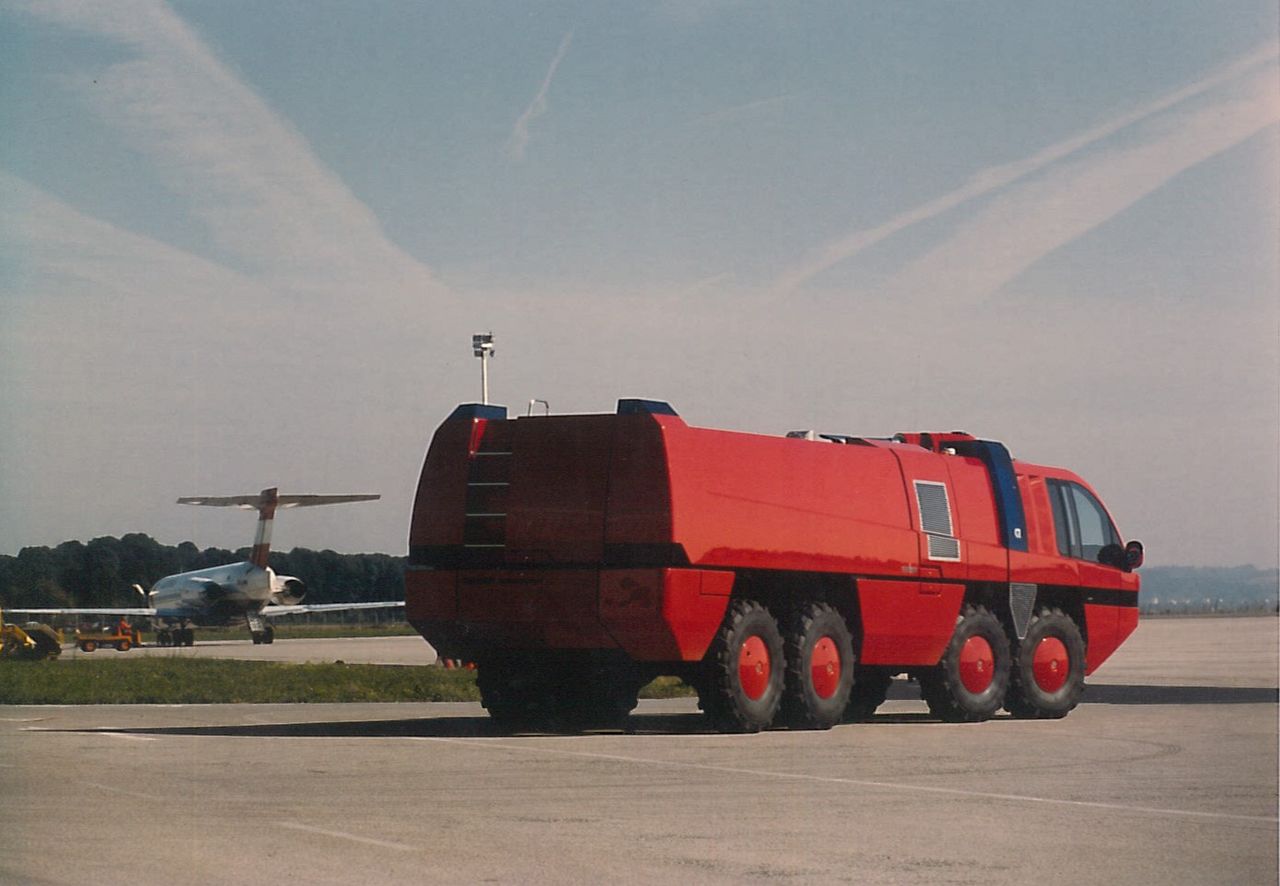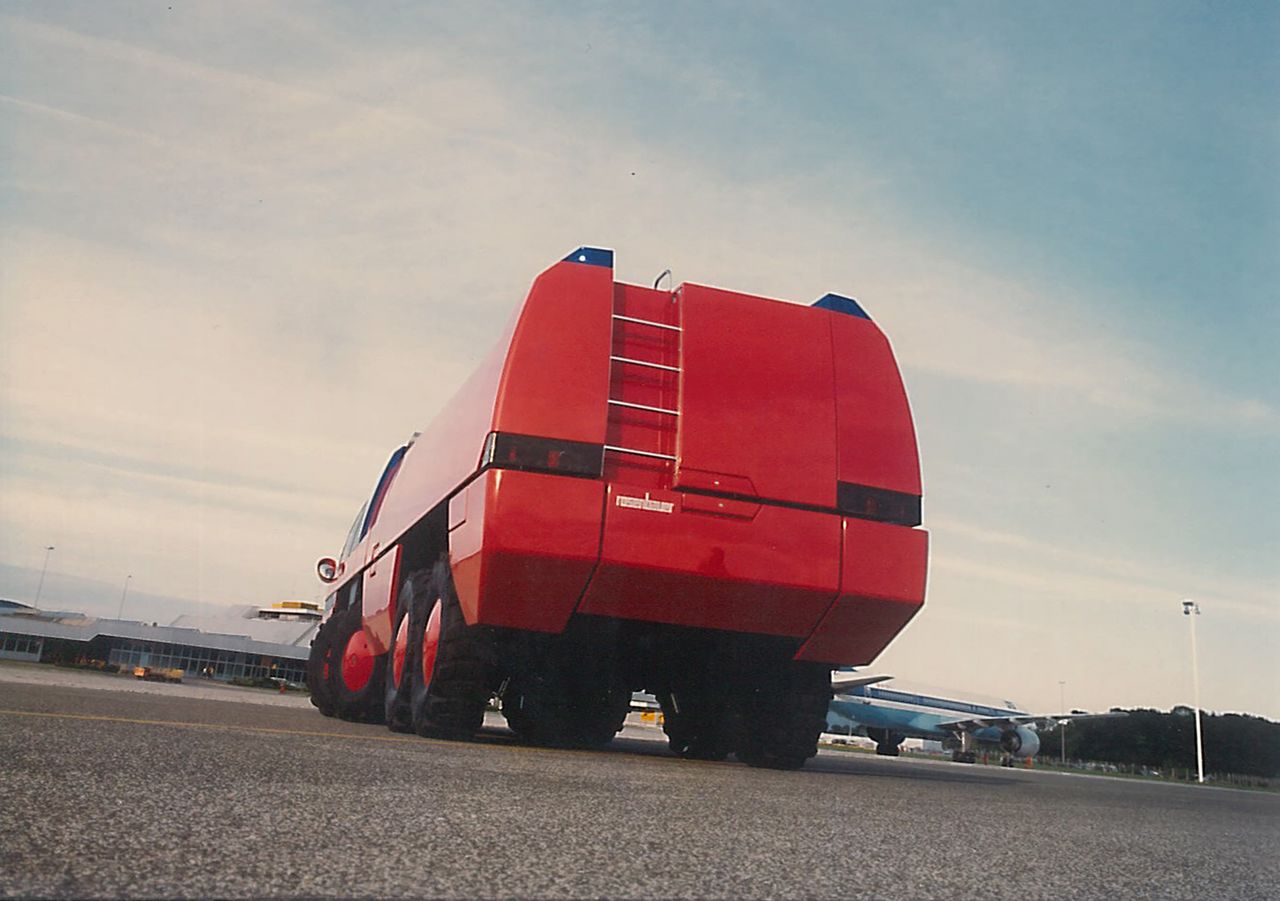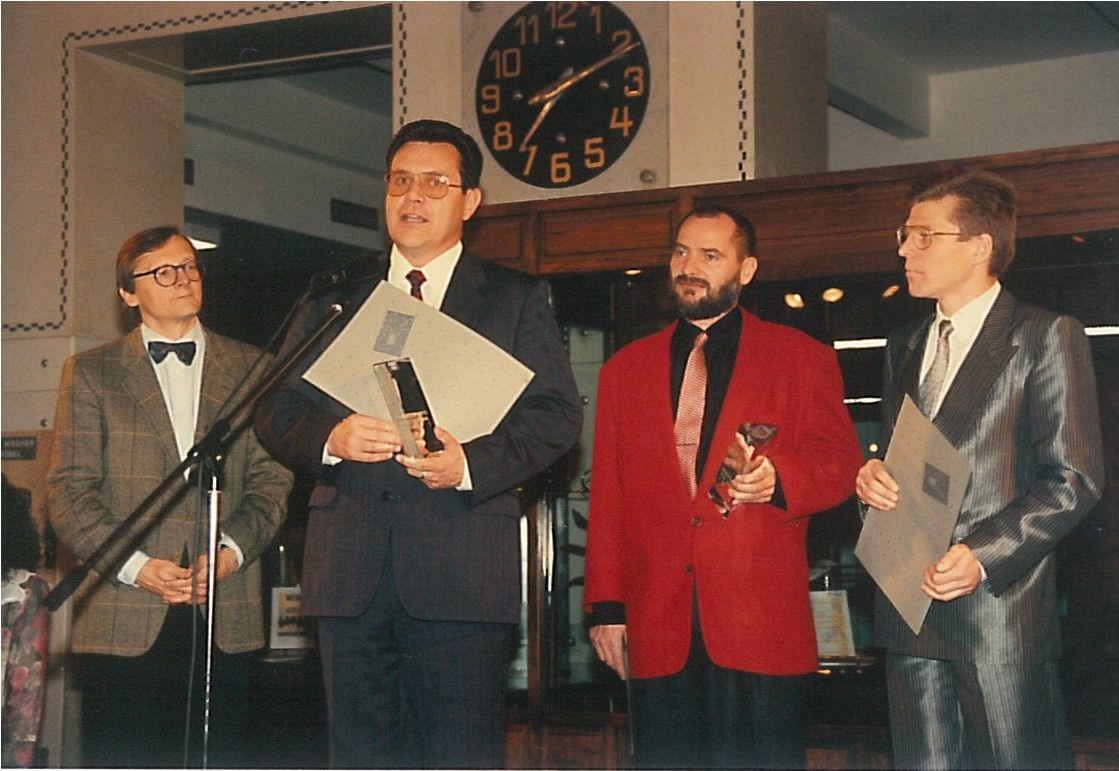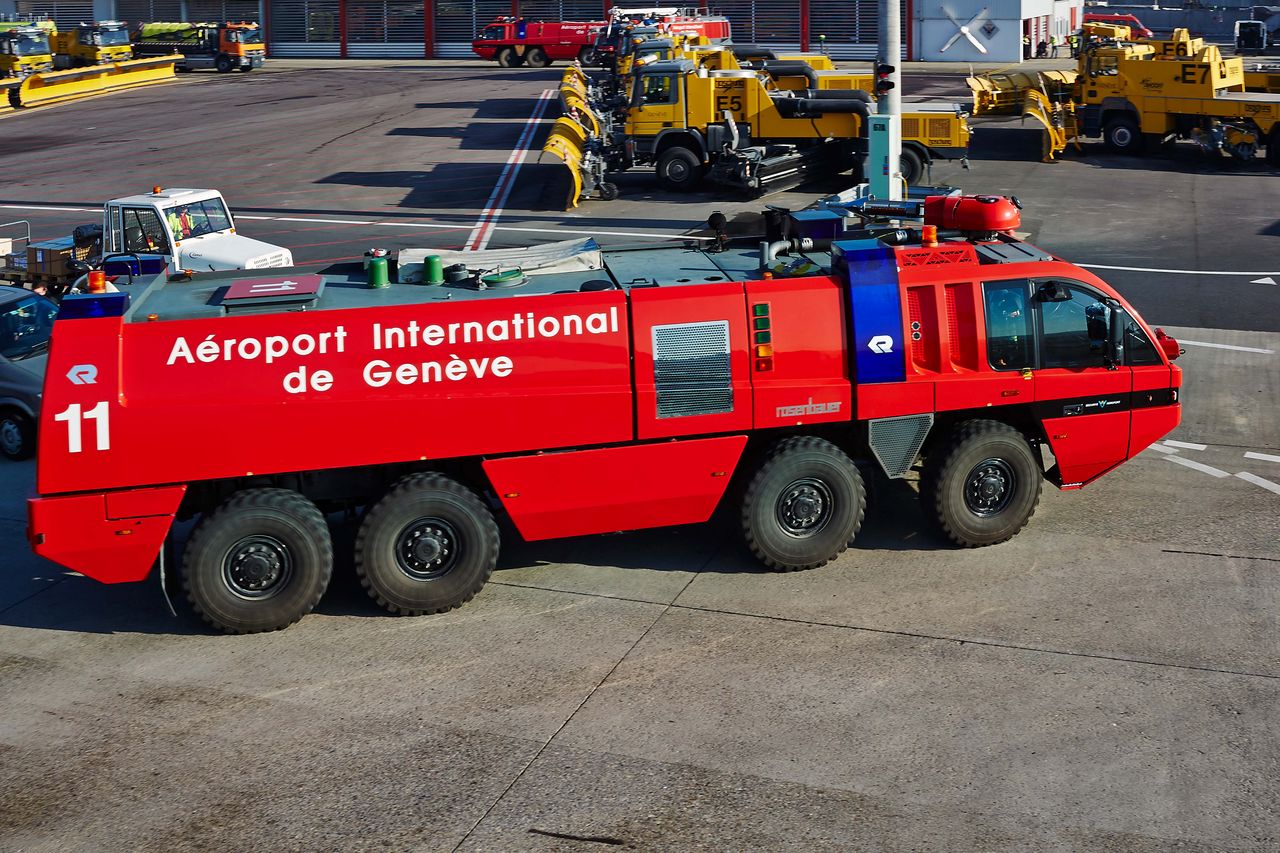The PANTHER No. 1 comes to the museum. How it all began!
The success story of the PANTHER began 30 years ago, and today the first vehicle has been giving the honor of being presented in a museum.
The year is 1991, and Rosenbauer is working on a new aircraft rescue and firefighting (ARFF) vehicle. It has to be fast and, above all, be capable of quick acceleration, because every second counts into the event of an aircraft disaster. It must carry a lot of extinguishing agent on board, a huge amount, because the fire load on a fully fuelled aircraft is enormous and can only be fought with large quantities of extinguishing agent. And it needs the appropriate high-performance firefighting technology to be able to apply the extinguishing agent efficiently and quickly. Bringing all this together in a high-performance integrated system is a challenge. Rosenbauer's answer is the PANTHER.
Revolutionary innovations
Rosenbauer already has many years of experience in the development and construction of ARFF vehicles. Vehicles for the use at airports were already being build since the 1950’s, and the first large tank firefighting vehicles with enhanced qualities (The SIMBA model range) came onto the market in the early 1980s. All of this know-how is incorporated into the development of the PANTHER, but there is a lot that is new about this vehicle: instead of a sheet metal body, it has a GRP Body which was a first for an ARFF vehicle by any manufacturer. It saves weight and allows a higher payload. It is not mounted on a special chassis, as is usually the case, but on an off-road serial chassis that was originally developed for military purposes and adapted for the PANTHER. And another novelty in the firefighting industry back then: the dashboard has a screen that controls the pump unit, the foam proportioning system, the scene lighting and the rotating beacon, as well as displaying various parameters, indication of the discharge firefighting discharge valves. This was the beginning of PLC based control electronics.
First deployment in Geneva
In September 1991, the time had come: the PANTHER celebrated its public premiere as part of a vehicle parade to mark the company's 125th anniversary. A short time later, it set off for its first deployment site: Geneva airport. People there are particularly open to new technology and have great confidence in Rosenbauer and its vehicle, which so far, however, only exists as a design drawing and a model. Martin Bichsel, service manager and fleet manager of the Geneva Airport Fire Department, remembers: "It was all brand new technology back then, which of course also had its teething troubles. It took some time to get them under control, but after that, from spring 1992 onwards, the vehicle worked like Swiss clockwork."
For 18 years, the PANTHER No. 1 remained in service with the Geneva Airport Fire Department. During this time, there is only one major firefighting operation, and curiously enough, it does not take place at the airport, but in Saint-Julien-en-Genevois, about ten kilometres away. There, on 24 February 2005, one of the largest night clubs in Europe caught fire and the PANTHER was called in by the local fire departments as a support vehicle. "Otherwise, there were only smaller operations at the airport," says Martin Bichsel, "but we could always count on the vehicle and were happy to use it for training purposes right up to the end."
Last operation in Sion
In 2009, PANTHER No. 1 moved to Geneva's partner airport Sion (Sitten). The vehicle remained in service there until the end of 2020. Its last operation was on November 23, for the landing of a small aircraft with landing gear problems. The PANTHER laid out a foam blanket and was ready for any eventuality should something go wrong during the landing. Thankfully, this was not the case and the emergency ended without incident. The vehicle was already supported in its last operation by its successor, a second-generation PANTHER 8x8, which was also previously stationed at Geneva Airport and served there for 13 years.
A new home
It is perfectly clear to those responsible at Rosenbauer that a historic vehicle like the PANTHER No. 1 cannot simply be sent into retirement. It should be preserved for posterity and ideally exhibited in a museum. But finding a suitable place is not that easy because of the dimensions of the vehicle. Out of the blue comes a call from Alexander Süsse, Chairman of the Feuerwehrmuseum Bayern e.V. in Waldkraiburg. "I asked whether it would be possible in principle to exhibit a decommissioned PANTHER as an industrial memorial in our museum," says Süsse. The museum already had 85 fire fighting vehicles in its collection and there was still room for the aircraft rescue and firefighting vehicle, which is over eleven metres long, in the total exhibition space of 4,500 m². Rosenbauer is not against the idea and donates the PANTHER No. 1 to the museum after taking it back from Sion.
There it can now be viewed at any time as RED NO.1 and is in the best of hands. This alone shows the commitment that the museum creators showed in transferring the vehicle. First they drive it to Munich Airport, where it is given a fitting farewell to airport life by two PANTHERS stationed there with a water salute. And they choreograph the operation so well that more and more firefighting fans with their own historic vehicles join them on the last few kilometers and escort the PANTHER to the museum. The active career of the No. 1 therefore ends as it began: at the head of a motorcade.
From the "birth announcement"
- PANTHER ARFF vehicle
- Off-road 8x8 chassis
- V12 - 4 turbodiesel, 735 kW (1,000 hp)
- from 0 to 80 km/h: 24 seconds
- Top speed: 135 km/h
- 11,000 l water, 2,000 l foam compound, 500 kg dry powder
- System output pump unit and foam proportioning: 6,000 l/min
- Roof turret output: 6,000 l/min, 80 m throw range
- Bumper turret output: 2,500 l/min, 60 m throw range
- Low superstructure weight due to glass fibre
- Total weight: 36,000 kg
- Dimensions L x W x H: 11.3 x 3.0 x 3.4 m
- Electronic, teachable turret
- Programmable logic control
The path of the first PANTHER.
The start of a success story.
The success story of the PANTHER began 30 years ago. Today, after 18 years in service at Geneva Airport, PANTHER No. 1 is now in the museum at the airport in Sion from 2009.
Its dimensions are impressive and can be seen at 11.3 meters in length, 3.0 meters in width and 3.4 meters in height.
A jewel from every perspective
From 0 to 80 km/h in 24 seconds and a top speed of 135 km/h are impressive.
First time at an airport
The PANTHER has 11,000 liters of water, 2,000 liters of foam compound and 500 kg of extinguishing powder and is therefore ideally suited for use at airports.
Water march
The output of the roof turret includes 6,000 l / min, 80 m throw range and 2,500 l / min, 60 m throw range of the front turret.
In its natural environment
The PANTHER features a V12 - 4 turbodiesel with 735 kW (1,000 hp) on a high-clearance 8x8 chassis.
Austrian State Prize for Design
The picture shows Wolfgang Schüssel, Julian Wagner, Kristian Fenzl, Peter Scheer at the award ceremony in Vienna.
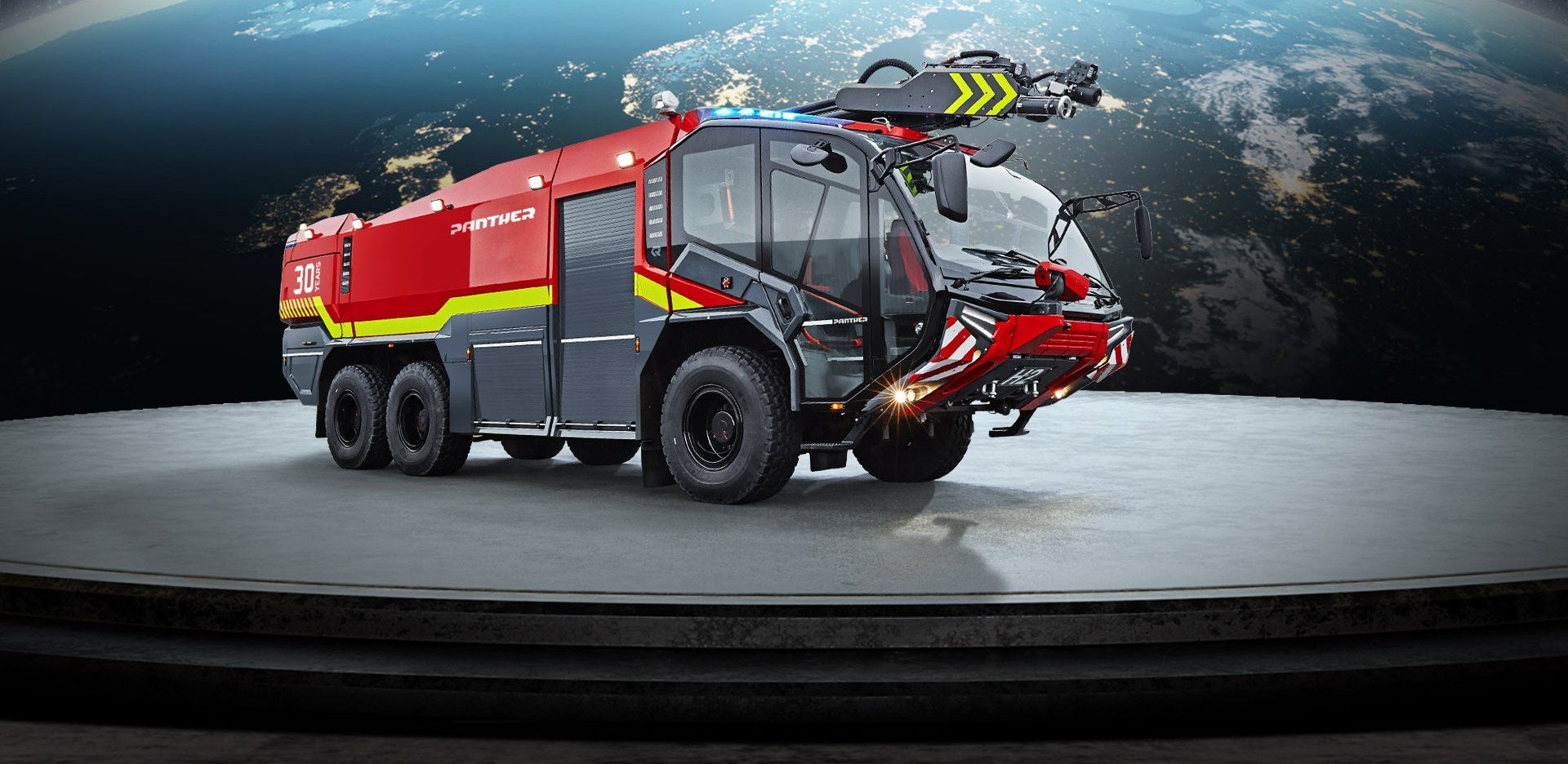
Register now for the Rosenbauer Newsletter & always be well informed!
Contact
Rosenbauer International AG
Paschinger Str. 90
4060 Leonding, Austria
office@rosenbauer.com
